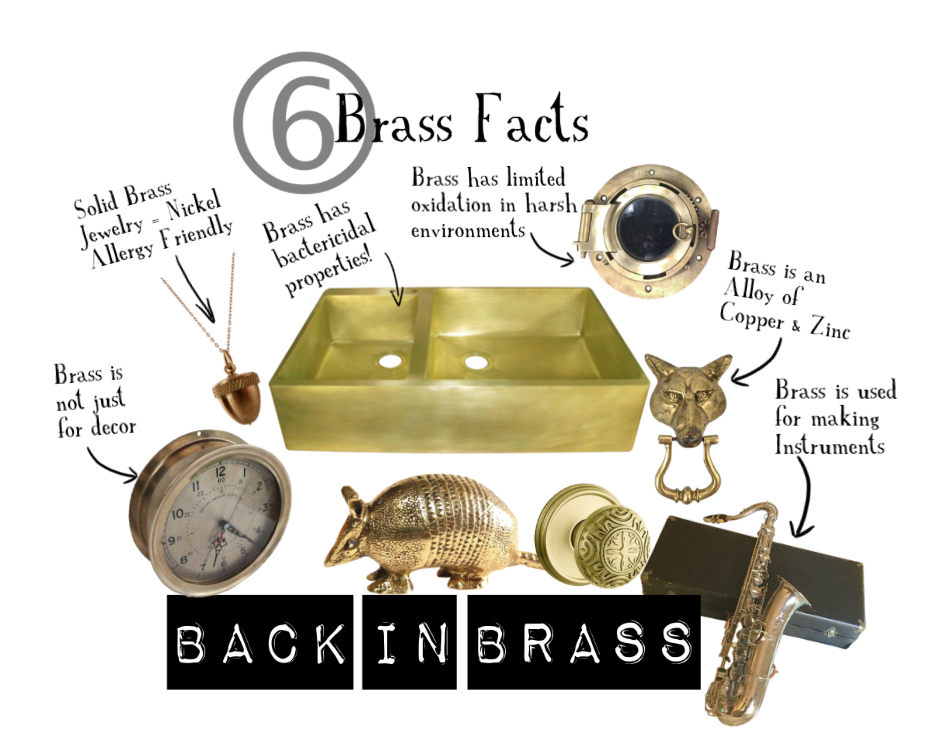
Brass is as relevant today as it was in the latter part of the bronze age when copper and zinc were first alloyed to create the first brass. Its many inherent properties make it ideal for many uses.
Known for its attractive yellow color, brass has been used for decoration because of its gold-like appearance but it also has uses in industrial, residential, and consumable applications. Brass can be found in zippers, gears, door knobs, sinks, ammunition cartridges, plumbing fixtures, range hoods, electrical components, art, pens, lighting, furniture, hardware, door hinges, pull knobs, thumb tacks, counter tops and countless other places. Brass is a go-to metal for making tools or fittings where it is important that sparks are not to be made due to flammable or explosive environments. It lends itself to the casting process as well as machining processes and even has bactericidal properties! The copper in brass helps naturally kill bacteria.
Due to its limited oxidation in harsh environments relative to iron and copper, brass has a tradition of use in maritime industries. Before stainless steel was invented in the early 20th century, brass was the primary metal in all things nautical.
Solid Brass Jewelry is known as an “allergy-free or allergy friendly” metal for people who are allergic to the widely used nickel in jewelry. Brass is used in many musical instruments as well such as cymbals, guitar strings, and the entire brass section of the orchestra. Like bronze, brass has a rich tonal quality that resonates well.
So brass has its uses for the sheer beauty of it in its various incarnations, but there are often practical and historical considerations at play as well.
Like what you saw in this months info graphic?
Click the links below to visit their websites
Solid Burnished Brass 2 Basin Farmhouse Sink from Texas Lightsmith: https://www.texaslightsmith.com/custom-sinks/
Vintage Brass Porthole: https://www.chairish.com/product/188448/vintage-brass-ship-porthole-188448
Solid Brass Acorn Necklace from Pumpkin Seed Jewelry: https://www.etsy.com/listing/120537248/acorn-secret-container-necklacesolid
Nautical Solid Brass Wall Clock: https://www.chairish.com/product/287919/1940-s-nautical-round-solid-brass-wall-clock
Brass Wolf Door Knocker: https://www.onekingslane.com/p/4248350-brass-wolf-head-door-knocker
Brass Armadillo from Curiopolis: https://www.etsy.com/listing/492219956/brass-armadillo-figurine-vintage-exotic?ref=shop_home_active_24&utm_source=polyvore&utm_medium=cpc&utm_campaign=home%20decor
Brass Door Knob: https://www.build.com/baldwin-5067-m-priv-privacy-door-knob/s911656?uid=2288319&source=poly-cpc_2288319&ca_6c15c=120135390007424381


